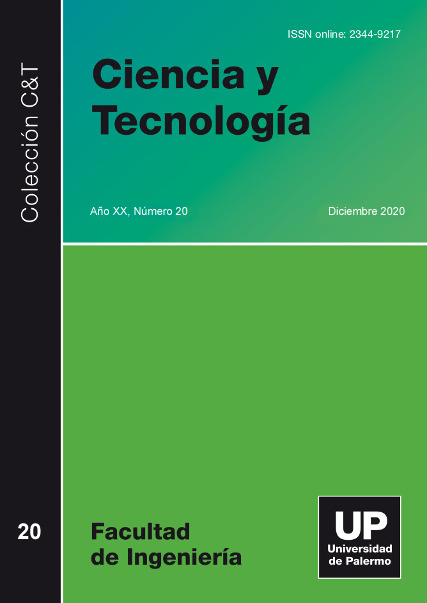Machine learning for detection of cognitive problems: a review of the literature
Abstract
The detection of cognitive problems, especially in the early stages, is critical and the method by which it is diagnosed is manual and depends on one or more specialist doctors to diagnose itself. As the cognitive decline escalates into the early stage of dementia eg Alzheimer's disease (AD). The early stages of AD are very similar to Mild Cognitive Impairment, so it is essential to be able to identify the possible factors associated with the disease. The objective of this research is to demonstrate that automated models can differentiate and classify Mild Cognitive Impairment (MCI) and AD disease.
For this research, a survey methodology was used where a study of around 30 investigations is carried out where they show that Machine Learning (ML) algorithms serve as support to the specialist doctor to determine whether or not a person has Alzheimer's or some type of dementia related.
The algorithms used for the classification of cognitive problems and healthy people (control) were: decision support machines (SVM), neural networks (RN), Decision Trees (DT), and Naîve Bayes (NB).
According to the findings, the most used algorithms for classification are: SVM and Neural Networks, but the algorithm that had the best precision was NB.
Downloads
References
Alashwal, H., El Halaby, M., Crouse, J. J., Abdalla, A., & Moustafa, A. A. (2019). The application of unsupervised clustering methods to Alzheimer’s disease. Frontiers in Computational Neuroscience, 13(May), 1–9. https://doi.org/10.3389/fncom.2019.00031
Alzhe. (2019). 2019 Alzheimer’s disease facts and figures. Alzheimer’s & Dementia, 15(3), 321–387. https://doi.org/10.1016/j.jalz.2019.01.010
Alzheimer’s_Association. (2020). Alzheimer’s Association 2020 Facts and Figures Report. Alzheimer’s Association, 1. https://www.alz.org/alzheimers-dementia/facts-figures%0Ahttps://alz.org/alzheimers-dementia/facts-figures%0Ahttps://www.alz.org/alzheimers-dementia/facts-figures%0Ahttps://www.alz.org/media/Documents/alzheimers-facts-and-figures_1.pdf
Chen, R., & Herskovits, E. H. (2010). Machine-learning techniques for building a diagnostic model for very mild dementia. https://doi.org/10.1016/j.neuroimage.2010.03.084
Diagnóstico del Alzheimer | Español | Alzheimer’s Association. (n.d.). Retrieved May 20, 2020, from https://www.alz.org/alzheimer-demencia/diagnostico?lang=es-MX
Donoso, A., Venegas, P., Villarroel, C., & Vásquez, C. (2001). Deterioro cognitivo leve y enfermedad de Alzheimer inicial en adultos mayores. Revista Chilena de Neuro-Psiquiatria, 39(3), 231–238. https://doi.org/10.4067/s0717-92272001000300007
Herrera-Rivero, M., Hernández-Aguilar, M. E., Manzo, J., & Aranda-Abreu, G. E. (2010). Alzheimer’s disease: Immunity and diagnosis. Revista de Neurologia, 51(3), 153–164. https://doi.org/10.33588/rn.5103.2009531
Informe ADI/Bupa. (2013). La demencia en América: El coste y la prevalencia del Alzheimer y otros tipos de demencia. https://www.alz.co.uk/sites/default/files/pdfs/dementia-in-the-americas-SPANISH.pdf
Mayo Clinic. (n.d.-a). Demencia - Síntomas y causas - Mayo Clinic. Retrieved September 16, 2020, from https://www.mayoclinic.org/es-es/diseases-conditions/dementia/symptoms-causes/syc-20352013
Mayo Clinic. (n.d.-b). Estadios del Alzheimer: cómo avanza la enfermedad - Mayo Clinic. Retrieved August 26, 2020, from https://www.mayoclinic.org/es-es/diseases-conditions/alzheimers-disease/in-depth/alzheimers-stages/art-20048448
Mestizo Gutiérrez, S. L., Herrera Rivero, M., Cruz Ramírez, N., Hernández, E., & Aranda-Abreu, G. E. (2014). Decision trees for the analysis of genes involved in Alzheimer[U+05F3]s disease pathology. Journal of Theoretical Biology, 357, 21–25. https://doi.org/10.1016/j.jtbi.2014.05.002
Nevala, K. (2017). The machine learning primer: A SAS best practices e-book. SAS Institute Inc., 53.
Orimaye, Sylvester O., Wong, J. S. M., Golden, K. J., Wong, C. P., & Soyiri, I. N. (2017). Predicting probable Alzheimer’s disease using linguistic deficits and biomarkers. BMC Bioinformatics, 18(1), 1–13. https://doi.org/10.1186/s12859-016-1456-0
Orimaye, Sylvester Olubolu, Wong, J. S.-M., & Golden, K. J. (2014). Workshop on Computational Linguistics and Clinical Psychology: From Linguistic Signal to. Clinical Reality, 78–87. http://www.alz.org/dementia/
Payan, A., & Montana, G. (2015). Predicting Alzheimer’s disease a neuroimaging study with 3D convolutional neural networks. ICPRAM 2015 - 4th International Conference on Pattern Recognition Applications and Methods, Proceedings, 2(249), 355–362.
Sarraf, S., & Tofighi, G. (2016). Classification of Alzheimer’s Disease Structural MRI Data by Deep Learning Convolutional Neural Networks. 8–12. http://arxiv.org/abs/1607.06583
Wang, L., & Liu, Z. P. (2019). Detecting diagnostic biomarkers of Alzheimer’s disease by integrating gene expression data in six brain regions. Frontiers in Genetics, 10(MAR), 1–11. https://doi.org/10.3389/fgene.2019.00157
Williams, J. A., Weakley, A., Cook, D. J., & Schmitter-Edgecombe, M. (2013). Machine learning techniques for diagnostic differentiation of mild cognitive impairment and dementia. AAAI Workshop - Technical Report, WS-13-09, 71–76.
Ye, J., Wu, T., Li, J., & Chen, K. (2011). Machine learning approaches for the neuroimaging study of Alzheimer’s disease. Computer, 44(4), 99–101. https://doi.org/10.1109/MC.2011.117
The articles published in the journal Ciencia y Tecnología are the exclusive property of their authors. Their opinions and content belong to their authors, and the Universidad de Palermo declines all responsibility for the rights that may arise from reading and/or interpreting the content of the published articles.
The reproduction, use or exploitation by any third party of the published articles is not authorized. Its use is only authorized for exclusively academic and/or research purposes.









